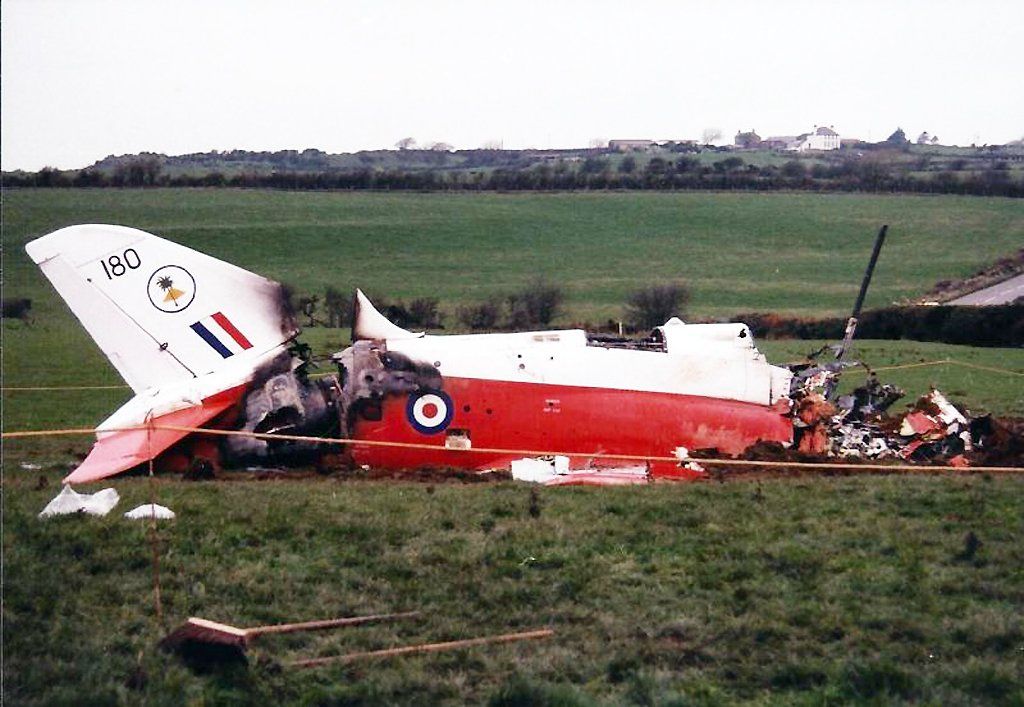A VIEW FROM THE FENCE VE/VJ DAY
Dennis Pritchard • 23 March 2021
A VIEW FROM THE FENCE VE/VJ DAY

It was indeed unfortunate that due to the deadly Corona virus pandemic, VE-Day 75, scheduled for 8 May, has had to be postponed, as the world is now facing another world war.
On that date in 1945, RAF Valley had obviously received the good news of VE- Day with great jubilation and much merry making. However, before consideration for demobilisation, the personnel were not allowed to rest on their laurels for too long, as the station had one further important task to complete.
This was due to an agreed pre-planned strategy; whereby as soon as the end of the conflict in Europe; it had been decided that all surviving U.S. Eighth Air Force bombers and crews should return to the United States. Following three weeks leave, the crews were then to report back for assignments to the Pacific Theatre. Within the scheme, only one U.K. departure airfield had been specifically earmarked, and that was RAF Valley! At the time, the staff comprised 724 RAF members under the control of Transport Command and 784 Americans, who were all well versed in dealing with transatlantic air traffic since the USAAF had first arrived in 1943.
As soon as the station had “sobered up” and had got organised, the ambitious scheme was to get under way. Designated Project White, it was to commence on 20 May, when 72 aircraft were processed. The B-17 Flying Fortresses and B-24 Liberators would then arrive carrying their nine crew members, together with eleven passengers. The intention was then for the aircraft to stay overnight for final checks and refuelling.
In anticipation, an average of 25,000 gallons of fuel per day would be required, which would be obtained from a depot in Caernarfon. The essential supplies would then be transported by rail to a siding, which had quickly been constructed, adjacent to the airfield perimeter. By the end of July 1945, no less than 2,237 bombers had passed through the station, which had resulted in a requirement for overnight accommodation for 35,384 officers and enlisted men. As a result, the airfield had quickly been dubbed as Happy Valley.
During this period of intense activity, fatal accidents were remarkably low. However, a B-17 had crashed on a hill overlooking Barmouth whilst en route to Valley; while a B-24 which had departed had struck high ground on the Isle of Skye. In both incidents, all personnel had unfortunately perished. In addition, another B-24 had ditched in the Atlantic, with no survivors.
On 18 June, an RAF Mosquito made an emergency landing with its port engine on fire, while in the evening, a B-17 overshot and slewed off the runway. The following day, a P-51 arrived manned by a pilot who had arrived to see off his brother, who was also a pilot on one of the B-17s. On departure, the Mustang performed a short flying display, witnessed by his brother; only to crash into the sea within 150 feet of the beach, where the dead pilot’s body was eventually recovered by swimmers.
Following the Eighth Air Force exodus, it was then the turn of the tactical Ninth Air Force A-26 Invaders and C-46/C-47 transports arriving from the continent, before heading for the U.S. As a result, by the end of August, the total aircraft numbers dispatched was 2,498.
However, when Emperor Hirohito announced the Japanese surrender on 15 August 1945; thankfully there was no requirement for the apprehensive American servicemen to be re-deployed to the Pacific.
During September, the Americans manning the 1407th Air Base Wing, Army Air Force Station 568 had almost all departed, apart from a handful of technicians manning the radar and GCA. In the meantime, virtually all of the RAF personnel would also be on their way to Civvy Street; apart from No 1526 Blind Approach Training Flight, operating Oxfords, which was to remain until December 17. Christmas and New Year was celebrated by a handful of remaining airmen, as RAF Valley faced an uncertain future…….
It has now been reported that August 15/16 will be recognised as VE/VJ 75, when the entire world can celebrate; hopefully also to the defeat of COVID-19!
Aerophile
valleyaviationsociety.co.uk
Photo 1 – Liberator on finals to runway 20. (USAF)
Photo 2 – Dealing with the aircraft movements. (USAF)
Photo 3 – The pilot briefs his crew and passengers before departing for home. (USAF)
Photo 4 – The hapless Flying Fortress that never made it to RAF Valley. (USAF)
Photo 5 – Civilian staff bid a fond farewell. (USAF)
Photo 6 – RAF Valley on August 13, 1945 with 115 Ninth Air Force aircraft awaiting departure. (RAF)
Photo 7 – On the scrap heap in the States! (USAF)















